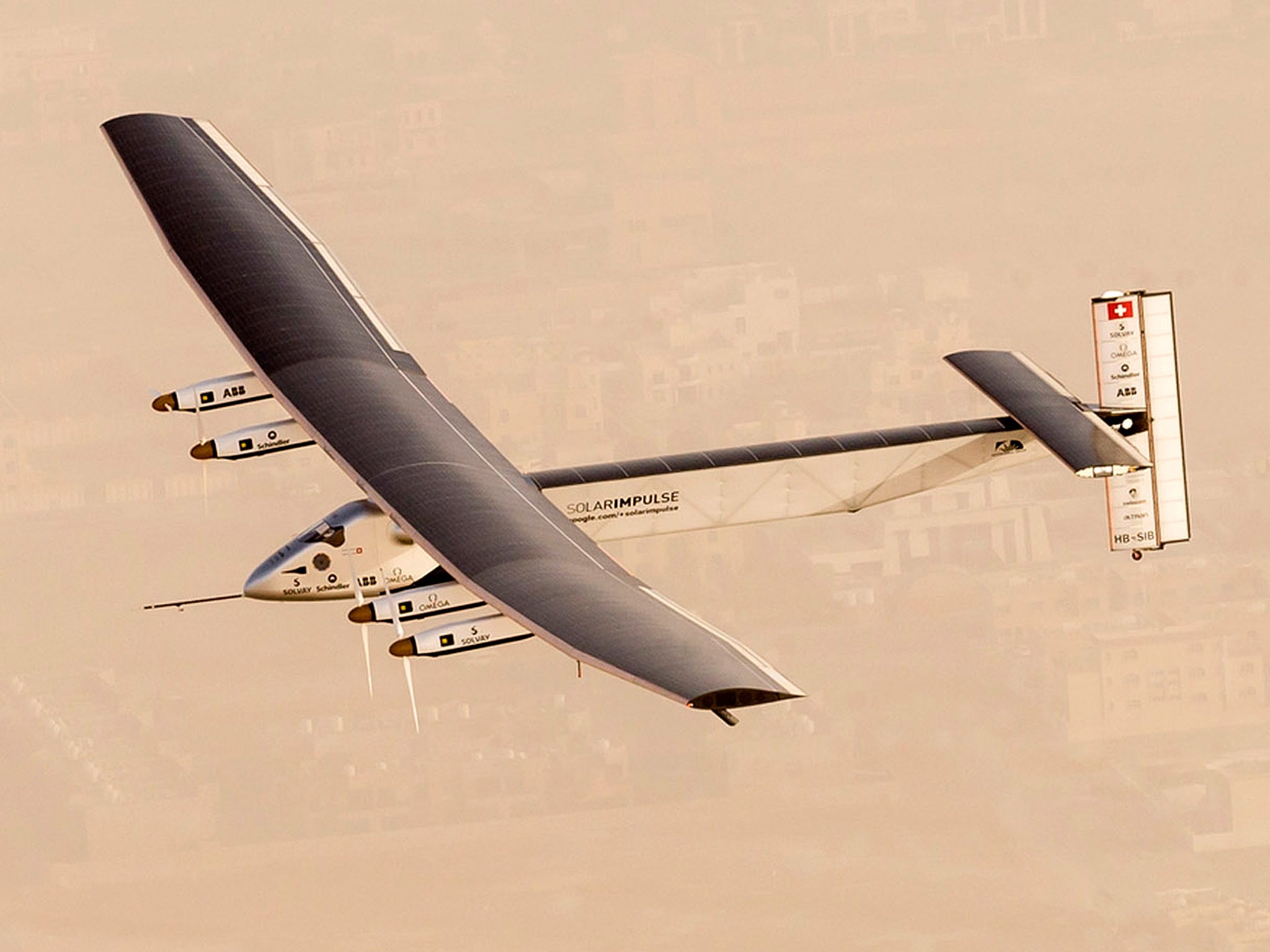Solar Impulse plane begins first sun-powered flight around the world – but how does it work... and will it?
The second version of the plane began its five month journey this morning

Two Swiss pilots began the first ever attempt to fly around the world in a solar-powered plane this morning.
André Borschberg and Bertrand Piccard, the founders of the project, will take it in turns to fly the plane during the five-month long project. Each flight will last five or six days, with the two pilots swapping when the plane stops to be maintained.
The plane set off from Abu Dhabi this morning and will head around the world before coming back to the Gulf in late July or August.
But it’s far from just a demonstration of solar power technology – the plane and its journey hopes to serve as a demonstration of the possibilities of a clean flight.
Solar Impulse in numbers:
Solar cells: 17,248, all built into the wing
Batteries: 4, made of lithium-ion
Wingspan: 72 meters (236 feet), wider than a Boeing 747
Weight: 5,070-lb, about the weight of a car
Speed: 25 knots, or 28 mph, is the best speed according to the pilots
Naps: 12 for every 24 hours
Gallons of fuel: 0
This is far more ambitious than previous tests — pushing both the plane and pilots harder than ever before — so nobody's really sure. That includes the pilots, who this morning said that despite months of simulations it's impossible to know what will happen when the mission begins.
"It is also exciting because you know, you simulate, you calculate, you imagine, but there is nothing like testing and doing it in real," Borschberg said just hours before takeoff. "I am sure we are all confident and hopefully we will be able to see each other here in five months."
The two pilots have flown coast-to-coast in the US before, and are now looking to take on the world. The plane is a version of a prototype that first took off five months ago.
How does it work?
It has huge wings, helping it fly and catch the sun. But it’s also built to be as light as possible, keeping it efficient.
The plane is powered by solar cells made of very thin film. That energy is then stored in super-efficient batteries, to help it stay in the air in the dark, which is used to power the clean motors that push the plane through the air.
It will stop at various locations, using the time for its pilots to rest and fix the plane.
What are the challenges for the pilots?
The trips will be long and gruelling – forcing pilots to sit still and concentrate for days at a time. And they’ll do all that in a tiny cockpit – about the size of a family car, storing all of their supplies and support systems.
To stave off the problems of being confined to their seats, the two pilots will practice yoga and have trained hard.
But the bigger challenge is keeping concentration during the long journeys. One of the two men, Bertrand Picard, is a psychologist and the two have learnt meditation and hypnosis techniques to ensure that they can keep their concentration up throughout the journey.
They’ll also take small 20-minute naps during the flights, 12 times a day. Pilots will wear goggles that will flash lights to wake them up.
Why does it matter?
The team behind the flight hope that it will serve as a demonstration of the viability of green air travel. The journey itself will act as a practical demonstration — but the group behind it will campaign about cleaner energy during its periodic stops.
The campaign is part of “Future is Clean”, a campaigning group set up by the two men that founded the Solar Impulse mission and supported by a range of companies and people including Richard Branson and Prince Albert of Monaco.
Is the plane the future of air travel?
Not this one, which has been built to be as light as it possibly can be: it can only carry one person and is unlikely to be able to ever do anything else. But it hopes to ignite a new interest in green planes — so something like it might be carrying you on your holidays in years to come.
Subscribe to Independent Premium to bookmark this article
Want to bookmark your favourite articles and stories to read or reference later? Start your Independent Premium subscription today.

Join our commenting forum
Join thought-provoking conversations, follow other Independent readers and see their replies